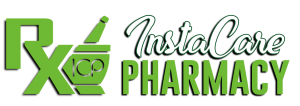[tm_pb_section admin_label=”Section” fullwidth=”off” specialty=”off”][tm_pb_row admin_label=”Row”][tm_pb_column type=”1_4″][tm_pb_image admin_label=”Image” src=”https://instacarerx.com/wp-content/uploads/2018/12/AdobeStock_34215841.jpg” show_in_lightbox=”off” url_new_window=”off” use_overlay=”off” animation=”left” sticky=”off” align=”left” force_fullwidth=”off” always_center_on_mobile=”on” use_border_color=”on” border_color=”#ffffff” border_style=”solid” border_width=”6″] [/tm_pb_image][tm_pb_image admin_label=”Image” src=”https://instacarerx.com/wp-content/uploads/2018/12/download-1.jpg” show_in_lightbox=”off” url_new_window=”off” use_overlay=”off” animation=”left” sticky=”off” align=”left” force_fullwidth=”off” always_center_on_mobile=”on” use_border_color=”on” border_color=”#ffffff” border_style=”solid” border_width=”6″] [/tm_pb_image][tm_pb_image admin_label=”Image” src=”https://instacarerx.com/wp-content/uploads/2018/12/blog.png” show_in_lightbox=”off” url_new_window=”off” use_overlay=”off” animation=”left” sticky=”off” align=”left” force_fullwidth=”off” always_center_on_mobile=”on” use_border_color=”on” border_color=”#ffffff” border_style=”solid” border_width=”6″] [/tm_pb_image][tm_pb_image admin_label=”Image” src=”https://instacarerx.com/wp-content/uploads/2018/12/dermatologic-compounding-apex.jpg” show_in_lightbox=”off” url_new_window=”off” use_overlay=”off” animation=”left” sticky=”off” align=”left” force_fullwidth=”off” always_center_on_mobile=”on” use_border_color=”on” border_color=”#ffffff” border_style=”solid” border_width=”6″] [/tm_pb_image][/tm_pb_column][tm_pb_column type=”3_4″][tm_pb_text admin_label=”Text” text_orientation=”left” use_border_color=”off” border_color=”#ffffff” border_style=”solid”]
What is Compounding?
What to know about compounding?
Compounding is the art and science of creating personalized medicine. It all starts with a problem: the child who can’t swallow pills, the patient with a gluten allergy, the much-needed drug that’s in short supply. For whatever reason, many people aren’t served by mass-produced medications. That’s where compounding comes in. Special flavorings, unique dosage forms, innovative delivery methods – using these tools and more, compounding pharmacists work with prescribers to fill a gap in health care through customized solutions for specific patient needs. Compounding is a great option to explore for people who:
- Have allergies to common mass-produced medicine fillers (casein, gluten, dyes, etc.)
- Aren’t taking medication as prescribed due to unpleasant side effects or lack of improvement
- Need custom medicine strengths and dosage forms (like creams or suppositories)
For patients, compounding can be life-changing, even lifesaving. And, it’s highly rewarding for pharmacists and practitioners, helping them solve some of health care’s toughest challenges.
Who ensures that drugs made by compounding pharmacies are safe?
The FDA traditionally regulates drug manufacturers. But states regulate pharmacies. Even so, three government agencies regulate compounding pharmacies:
- State boards of pharmacy ensure that pharmacies follow state regulations for pharmacy practice.
- The FDA regulates “the integrity of the drugs” and the active pharmaceutical ingredients from which they are made.
- The Drug Enforcement Administration regulates compounding pharmacies’ handling of controlled substances.
The independent Pharmacy Compounding Accreditation Board (PCAB) offers its official seal of approval to pharmacies that voluntarily pass strict inspections and other rigid requirements. Miller says some 180 compounding pharmacies have this strict PCAB accreditation. The NECC, the company at the heart of the fungal meningitis outbreak, was not PCAB accredited. But there’s a grey area. As some compounding pharmacies get larger, they begin to act like small drug manufacturers. So when does a large compounding pharmacy regulated by a state pharmacy board become a small drug manufacturer regulated by the FDA? “There’s no bright line,” Miller says.
- Making drugs before a doctor has written a prescription for them, except in “very limited quantities.”
- Making drugs with commercial-scale manufacturing or testing equipment.
- Making drugs for resale to individual patients.
- Making drugs commercially available in the marketplace or copying FDA-approved drug products.
However, this guidance is not an official FDA regulation and does not have the force of law.
[/tm_pb_text][/tm_pb_column][/tm_pb_row][/tm_pb_section]

